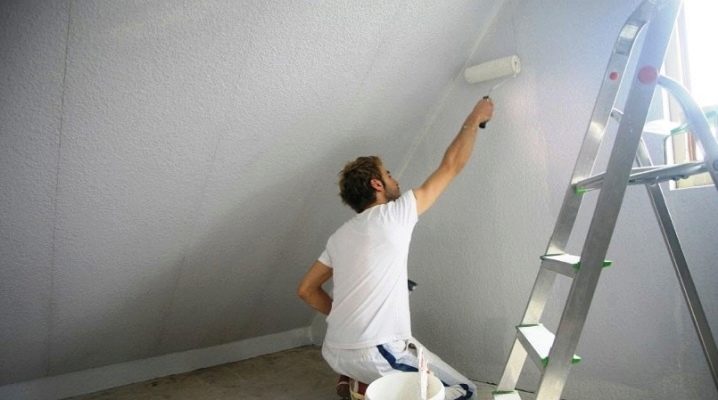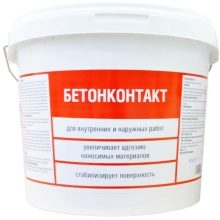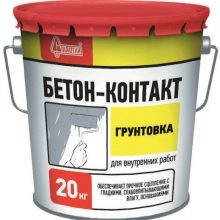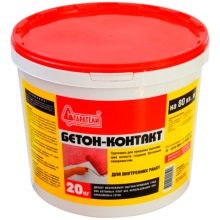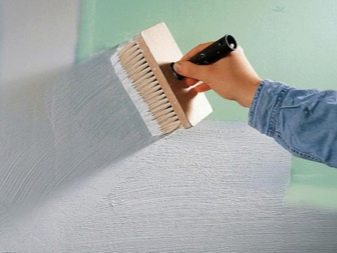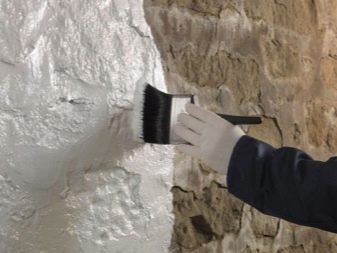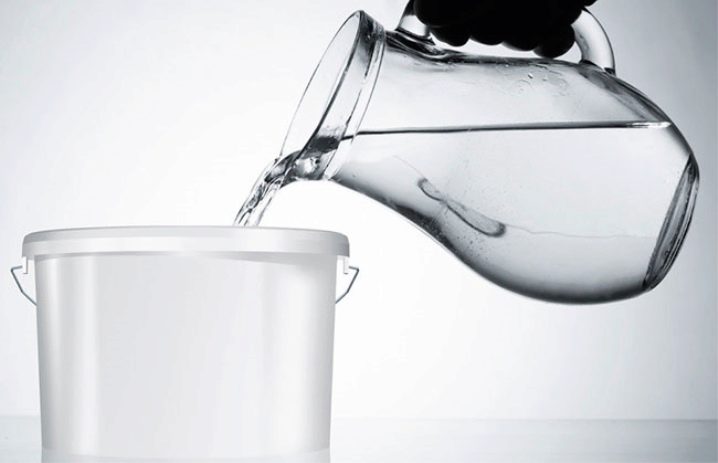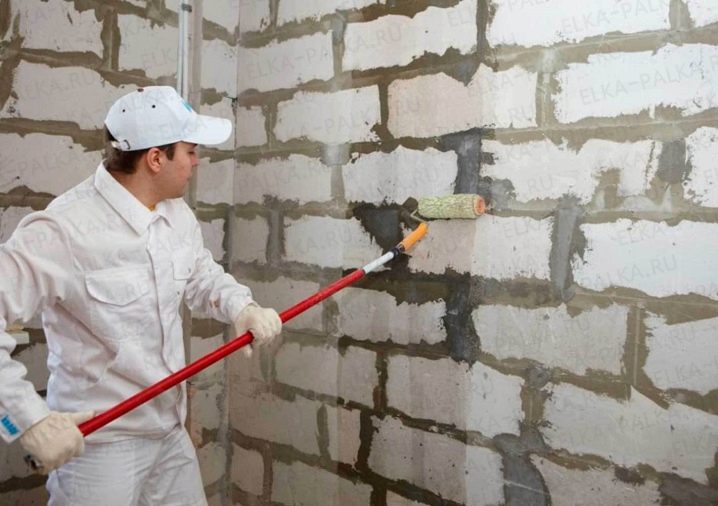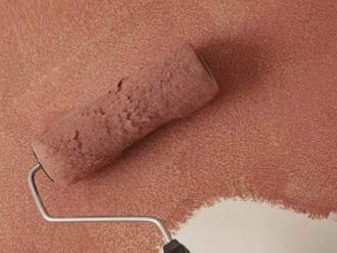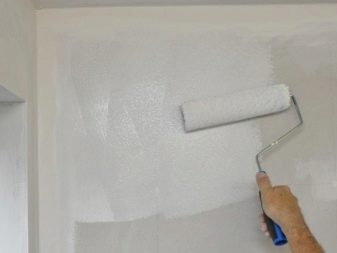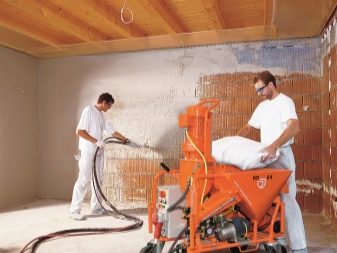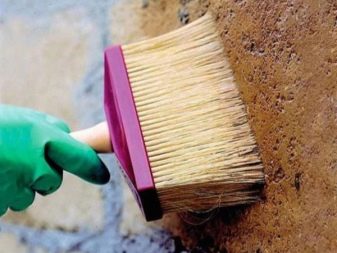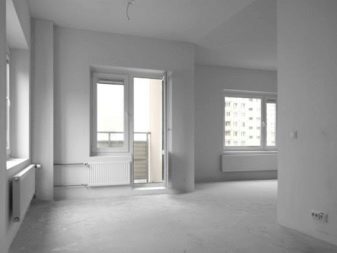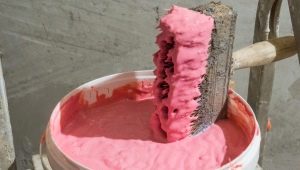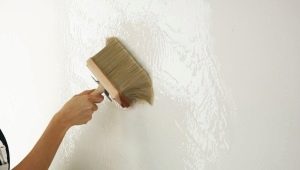How long does “Concrete Contact” primer dry?
Concrete is a very good and practical material. It is strong, resistant to mechanical destruction and other adverse factors. But his appearance leaves much to be desired. To prepare the surface for high-quality finish, you need to apply a special coating. One of them - primer "Betonokontakt."
Special features
The primer of this brand can be applied on the walls and ceilings after their preliminary processing. In addition to concrete, a suitable base will also be:
- brick;
- plasterboard partitions;
- other materials in the form of plates and similar blocks.
It is necessary to apply such a composition to make the base more sticky during the subsequent application of paints, enamels, varnishes and plasters.
By chemical nature "Betonokontakt" is a solution of acrylic with weighted additives. In addition to the main component, it includes quartz sand (pre-cleaned), cement and fillers.As additives, fungicides that effectively suppress the spread of harmful fungi are actively used. It is very important for builders to know how long the primer dries in order to build a clear timetable for the execution of work. For the answer, it's time to figure out the processing technology.
Application of the composition
In most cases, it is not diluted, but if you need to dilute the mixture, it is advisable to use simple tap water (if only it was sufficiently clean). It should be noted that dilution reduces the adhesion of the main finishing material to the concrete, but when applying a diluted "Concrete Contact" on top of wooden panels and similar materials, there will be no such problem. Whether to lubricate the substrate in one or two layers depends on its features and the complexity of the surface relief.
Drying time is determined mainly by:
- the number of stacked layers;
- ambient temperature;
- its relative humidity.
At home, ground surfaces are almost always brushes or rollers, even spray guns are rarely used. This equipment and special plastering installations are mainly used by professional builders, who themselves know how to calculate the consumption of primer for large-scale works. Important: "Betonokontakt" should not be used at negative air temperatures.
If it is possible to monitor the temperature and weather conditions are favorable, in the spring and autumn days it is allowed to prime the walls in the morning. Even in an ideal setting, the drying time is 2.5-4 hours.
When the air in the room is heated to 25 degrees, even a humidity of 65% will not be an obstacle to work, but the wall should dry about a day after the last stroke. The product is considered completely ready to use, and before work it will remain only to mix the composition. To cover 1 m2, you need to spend 200-300 g of "Betonokontakt".
Recommendations
"Betonokontakt" is completely safe, because during drying and subsequent finishing it does not emit any negative odor or toxic fumes. The primer is resistant to moisture: thanks to the dense film, it can even be used in bathrooms, swimming pools and as a floor waterproofing. It is advisable to immediately choose the shade of the material, especially since all the leading manufacturers make it in different colors. Focusing on the color of the created surface, it is easy to give it a pleasant look.
Pigment plays a purely technical role: it helps to identify poorly soaked areas, the color of which is somewhat different. There are three main uses:
- roller;
- spray application;
- special mechanical devices.
After applying “Concrete Contact” after about an hour it may seem that it is completely dried - this is a false impression: if you try to immediately put a new layer or paint the surface, the level of adhesion will not be enough. Therefore, experienced builders do this: in the evening, the desired surface is soaked with primer, and in the morning they start finishing. Losing time is also not worth it, because the accumulation of dust and dirt, which is inevitable in the housing being repaired, can devalue all the efforts made in a matter of hours.
It happens that it is known in advance - the base must be processed out of time. The solution of the problem is the additional application of another primer before applying “Betonokontakt” - this time deep penetrating - and the expectation of complete drying of the layer.
To speed up drying in the bathroom, sanitary unit and other similar premises, open the door wide open or include exhaust ventilation.When it is impossible to dry the walls in such ways, lay tiles or plaster, wallpaper can be glued no sooner than after 24 hours.
Consumption of the mixture
According to any manufacturer, "Betonokontakt" should be spent in the following proportion: 0.3 kg of emulsion per 1 square. m. surface. However, in reality, the numbers may be quite different. If the base contains many pores and absorbs moisture abundantly, you will need to use significantly more primer than indicated on the labels. For concrete and brick, it is necessary to spend 0.3-0.5 kg of the mixture, and always in several stages.
The drying time inevitably increases, if only because the depth of penetration of the primer is greater, and the evaporation rate in the thickness of the solid material is always less.
When working with concrete tiles, cement-based self-leveling floors and certain types of high-grade concrete, sometimes 200 g of Betonokontakt are enough. The easiest way to work with surfaces containing relatively few pores: painted planes, reinforced concrete and tile. Consumption is reduced to 150-250 g per 1 sq. Km. m., respectively, and the drying time will also be less.
For information on how to use "Concrete Contact", see the following video.
